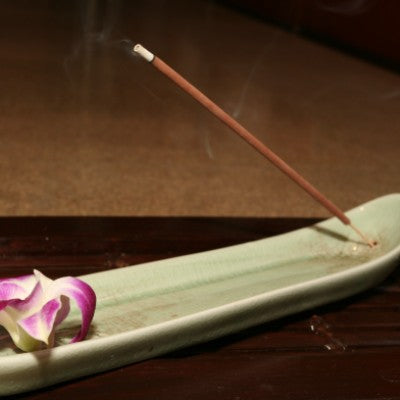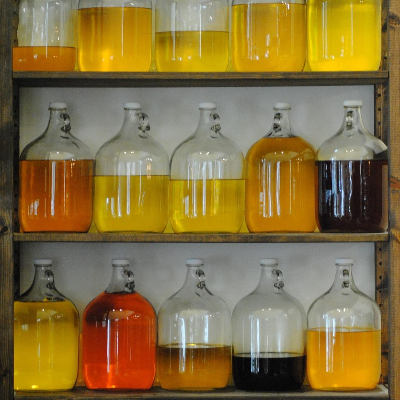Menu
-
-
F.A.Q
- How to identify genuine agarwood chip, natural or cultivated
- How to identify oil injection / absorption fake agarwood beads
- How to know if there are more than one oil in your oil
- How to make your wood bracelet or mala darker
- How to tell if an Agarwood bead sinks WITHOUT sinking it under water?
- How does back flow incense work and how do you burn it?
- Where to start if you don't know what agarwood is ?
- Why are you losing money if you buy seeds and plants?
- Which agarwood incense should I choose?
- Frequently Asked Questions
- Agarwood Related Articles
- Shipping
-
SHOP - Agarwood
-
SHOP - Other Fragrant Wood
-
SHOP - Incense Holder and Burner
-
- FREE Oud Oil guide
- Testimonials
- "Why did you buy this?"
- Contact us
- About Us
- +61430284329
- Login
-
English


Burning incense may cause heart disease, cancer, and other health problems. So, should we stop burning incense?
November 05, 2020 4 min read
The risk of using incense
Multiple studies showed the harmfulness of burning incense. Some of the side effects are
- heart disease
- long‐term use of incense is associated with an increased risk of squamous cell carcinoma of the respiratory tract
- Can cause skin irritation, mutagenic and asthma-aggravating effects
You see, there are many risks associated with using incense.
Does that mean we should stop using incense completely?
Rather than answering a YES or a NO, I would show you some different scenarios. After that, I will share with you what my thoughts are.
Peanut is deadly. Should we stop using peanut?
Peanut is yummy. Unfortunately, to some people, it is deadly. In 2014, Paul Wilson ordered his takeaway, and he specifically asked for no nuts. Unfortunately, the restaurant owner supplied Paul’s order containing peanuts.
Paul went into anaphylactic shock and was found slumped in his bathroom that night. He died a short time later. The restaurant owner was sentenced to 6 years (The Guardian, 2016).
Had the restaurant owner taken Paul’s words seriously, he would not have been in jailed and regretted his life.
So should we ban peanut?
Globally, hundreds of thousands of people consume peanut daily. It does more good than harm. Unfortunately, there are a few people who are allergic to peanut, so they need to be careful when it comes to food and drink. They need to let people know that peanut could damage their body, so other people know.
Otherwise, peanuts are an essential ingredient in food and drink, and generally, they are safe to consume
Cars are deadly. Should we stop using cars?
In Australia alone, every year, there are 1,195 people killed in road-related deaths. It means over 3 people died per day.
But people use cars to travel, work, shopping, visit friends and families, you named it. So without cars, the country stops functioning. You may say we can use public transport. And public transport means the use of bus and train which has many accidents too. So should we stop using all of them?
What about alcohol? The biggest offender
In the USA, 261 people die daily because of excessive alcohol usage.
In Australia, alcohol causes over 16 people deaths every day
Should we stop drinking because we could die from drinking it?
I don’t know but I see people drinking every time I passed a restaurant or a bar. I also have a drink or two when I go to a friend party. I might tell you something you already know, it is not about the alcohol but the consumer. As long as you keep the drink under a limit (you know your limit), don't drink and drive, I believe the risk of drinking alcohol is minimised.
So let go back to the question: Using incense is risky. Should we stop using incense?
It is all about the ingredients.
When you are burning incense, you are burning the incense ingredients. So let's talk about the incense ingredients.
The majority of incense on the market are made with and sawdust dipped with fragrance oil.
Sawdust
To keep the cost low, some manufacturers choose sawdust as an incense base. Sawdust are made from pulverised woods. If these woods are firewood, they can also be untreated wood; they are not toxic and safe to use.
However, another source of sawdust could be from construction timbers. These timbers could be treated with CCA (copper chrome arsenic) to prolong their life. One of the way of treatment is to use CCA. CCA is highly effective as a wood preservative to prevent fungal decay, wood-eating insects (Eco Tree Care, NA)

As a result, if sawdust is made from CCA treated wood, it is a health risk. When burnt, this treated wood release toxic chemical fumes: arsenic, and it is harmful to the consumer.
The challenge is to know what is the sawdust made from and unless the manufacturer discloses, it is difficult to know.
At Grandawood, we use pulverised agarwood to make our incense. On the surface, this pulverised wood looks similar to sawdust, but there is a difference between them.
Our pulverised agarwood is resinous, and they are aromatic when burnt. Sawdust is a waste product of woodworking, they smell like campfire when burn. (unless made from sandalwood, cedarwood, and other fragrant wood).
And because the sawdust is not aromatic, the incense manufacturer will need to add:
Fragrance Oil or essential oils
The second ingredient of incense could be fragrance oil. The purpose of these oils is to “perfume” the incense. And these oils could cause some adverse effects. For example, in July 1986, a 63-year-old Japanese male school teacher visited a clinic because he had the itchy left upper hand, left shoulder and abdomen. He had practised the Japanese Incense Ceremony for 15 years. When doctors did patch testing, they found that the culprit was the perfume in the incense. When burnt, the perfume volatilised. These odour particles were airborne and contacted his skin. Thus, these particles are the cause of his dermatitis.
Burning incense releases fragrance and particles into the air, which then settle on the skin, dissolve in the skin's natural oils, and potentially cause an allergic reaction and loss of skin colour (Hayakawa et al 1987)Perfume in the above was a mixture of oils. It could be synthetic; it could be essential oils. If you know you are sensitive to a particular ingredient, avoid it.
For spiritual value, people usually opt for the natural, plants derived incense.
At Grandawood, we do not need to add any fragrance oil because our pulverised agarwood is subtle, yet potent enough to make you feel great and spiritual.
Would you like to experience them? You can have a look at our incense here
Leave a comment
Comments will be approved before showing up.
Also in News

What is Tasbih? The Deep Meaning of Subhan Allah and the Role of Prayer Beads
November 09, 2025 4 min read

